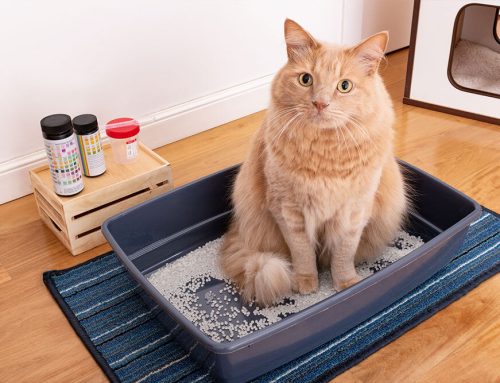Domestic cats have retained their instinctual behaviors after thousands of years of domestication. You have likely witnessed your cat pouncing on a toy mouse, perching high on a cabinet, or hiding in wait for those early morning sneak attacks on your ankle. Domesticated cats’ wild nature is what people love most about them, and to have a good quality of life, your cat needs to express these behaviors. Our Fairfax Veterinary Clinic team explains how you can encourage your cat to express their innate behaviors while maintaining harmony in your home.
Understanding natural cat behaviors
Before learning how to facilitate your cat’s natural behaviors, you need to understand them. Cats are obligate carnivores whose ancestors got their food through hunting. Domestic cats originate from the African wild cat Felis lybica. The domestication process began roughly 11,000 years ago, yet some of the traits of your whiskered pal’s earliest ancestors remain. Some instinctive feline behaviors include:
- Hunting — Cats are natural hunters; even if they’re well-fed, they still possess a strong prey-seeking instinct. This behavior includes stalking, pouncing, and catching prey, whether actual prey or a stuffed mouse.
- Exploring — Your cat is likely curious about their environment and loves to explore. Investigating new spaces, objects, and smells is a behavior that is instinctual in most animals, including cats.
- Climbing — Cats are natural climbers and enjoy being up high to see their surroundings fully. Climbing not only provides cats with exercise but also serves as a way to assess everything around them from a safe vantage point.
- Scratching — Scratching is vital for cats as the activity helps them maintain healthy claws, stretch their muscles, and mark their territory. You likely don’t appreciate your cat scratching the furniture. So, ensure you provide your cat with appropriate items to scratch such as a scratching post.
- Socializing — While cats are often considered solitary creatures, they still have social needs. They may enjoy interacting with people and other pets in the household, albeit on their own terms.
Facilitating natural behaviors in your cat
Now that you understand natural cat behaviors, you may wonder how you can help your whiskered friend express them. To give your cat opportunities to act on their natural instincts, consider these home modifications:
- Provide mental enrichment — All pets require mental enrichment activities to keep them happy and engaged. Swap out old toys with new puzzles, stuffed mice, and interactive games, such as a Cat Dancer or a laser pointer, for some challenging fun. Your cat likely loves to play with you, and this time together strengthens the bond the two of you share.
- Give them vertical space — Cats love to climb, and what could be better than cat trees, shelves, or perches to give your cat opportunities to climb and survey their territory? In your cat’s mind, height equals safety from predators. Vertical space provides them with a sense of security and helps reduce stress.
- Place scratching posts around the home — Place scratching posts or pads in various areas to encourage your cat to engage in this natural behavior. Multiple posts are the best choice because the more posts in the home, the less likely your cat will scratch furniture. Ensure the posts are sturdy and tall enough for your cat to stretch out while scratching.
- Build an outdoor enclosure — Also known as a catio, an outdoor enclosure can be screened and portable, or attached to a window. Catios are available through various merchants. If your home has an existing screened-in porch, your cat is one lucky feline! A catio or suitable enclosure allows your cat to experience outdoor sights, sounds, and smells while remaining protected from potential dangers.

- Grow cat-friendly plants — Most cats enjoy hiding among plants as camouflage. Nibbling on plants can benefit them by providing fiber, antioxidants, and vitamins. Before adding plants to your cat’s space, check with our Fairfax Veterinary Clinic team to ensure the foliage is nontoxic. Remember, lilies are extremely toxic to cats and often fatal when ingested, so ensure lilies are not included in the mix. Fresh catnip can be a wonderful indulgence for your favorite feline.
Providing enrichment, vertical space, scratching outlets, protected outdoor experiences, and quality bonding time are essential to meeting your cat’s instinctual needs. Observe your cat’s preferences and adjust your approach to ensure a harmonious relationship between you and your feline companion. To schedule your whiskered pal’s appointment and to learn more tips on how to enhance your cat’s natural behaviors, contact our Fairfax Veterinary Clinic team.








Leave A Comment